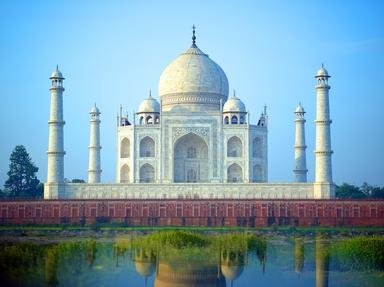Quiz Answer Key and Fun Facts
1. Founder of Mughal Dynasty who moved his followers to India
2. Ruled before and after an usurper, this emperor died from a fall on the stairs
3. Instituted many reforms including increased rights for Hindus and supported a new religious ideal, the Din-i Ilahi
4. World-conqueror added significant territory to the empire
5. Best known for tomb constructed for his wife, the Taj Mahal
6. Expanded the Mughal Empire to its largest extent
7. Fought a long war with the Marathas
8. Lost the Battle of Buxar
9. Started the Hindi-Islam unity festival, Phool Walon Ki Sair
10. Last of the Mughal emperors and deposed by Britain
Source: Author
bernie73
This quiz was reviewed by FunTrivia editor
ponycargirl before going online.
Any errors found in FunTrivia content are routinely corrected through our feedback system.
